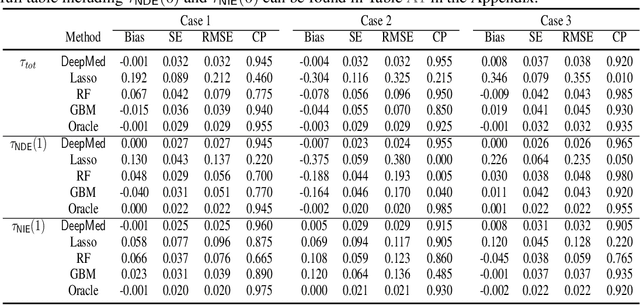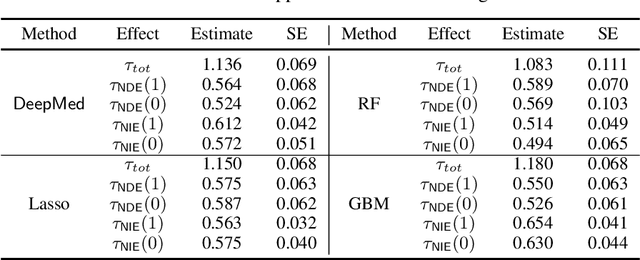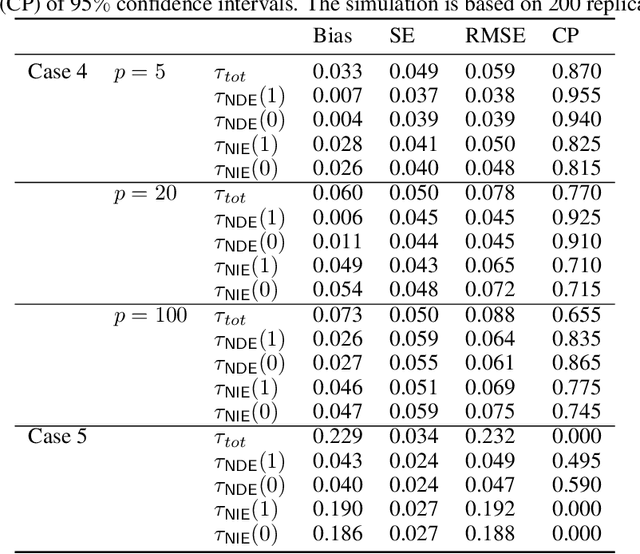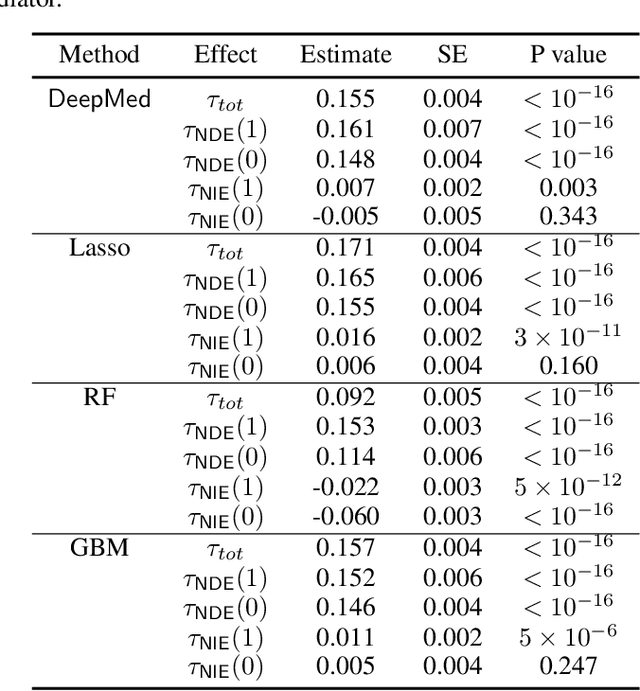Siqi Xu
DeepMed: Semiparametric Causal Mediation Analysis with Debiased Deep Learning
Oct 10, 2022



Abstract:Causal mediation analysis can unpack the black box of causality and is therefore a powerful tool for disentangling causal pathways in biomedical and social sciences, and also for evaluating machine learning fairness. To reduce bias for estimating Natural Direct and Indirect Effects in mediation analysis, we propose a new method called DeepMed that uses deep neural networks (DNNs) to cross-fit the infinite-dimensional nuisance functions in the efficient influence functions. We obtain novel theoretical results that our DeepMed method (1) can achieve semiparametric efficiency bound without imposing sparsity constraints on the DNN architecture and (2) can adapt to certain low dimensional structures of the nuisance functions, significantly advancing the existing literature on DNN-based semiparametric causal inference. Extensive synthetic experiments are conducted to support our findings and also expose the gap between theory and practice. As a proof of concept, we apply DeepMed to analyze two real datasets on machine learning fairness and reach conclusions consistent with previous findings.
A Joint Model for Aspect-Category Sentiment Analysis with Contextualized Aspect Embedding
Aug 29, 2019



Abstract:Aspect-category sentiment analysis (ACSA) aims to identify all the aspect categories mentioned in the text and their corresponding sentiment polarities. Some joint models have been proposed to address this task. However, these joint models do not solve the following two problems well: mismatching between the aspect categories and the sentiment words, and data deficiency of some aspect categories. To solve them, we propose a novel joint model which contains a contextualized aspect embedding layer and a shared sentiment prediction layer. The contextualized aspect embedding layer extracts the aspect category related information, which is used to generate aspect-specific representations for sentiment classification like traditional context-independent aspect embedding (CIAE) and is therefore called contextualized aspect embedding (CAE). The CAE can mitigate the mismatching problem because it is semantically more related to sentiment words than CIAE. The shared sentiment prediction layer transfers sentiment knowledge between aspect categories and alleviates the problem caused by data deficiency. Experiments conducted on SemEval 2016 Datasets show that our proposed model achieves state-of-the-art performance.
 Add to Chrome
Add to Chrome Add to Firefox
Add to Firefox Add to Edge
Add to Edge